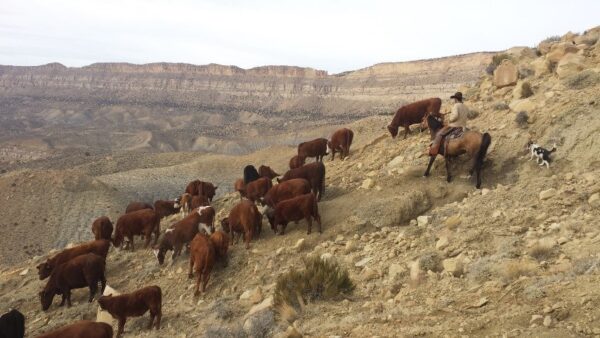On April 3, 2023, Bureau of Land Management proposed a new rule using the Federal Land Policy and Management Act of 1976 (FLPMA) to put conservation “on par with other uses of the public lands,” such as mining, drilling, and grazing. Among many different uses of public lands under the multiple use mandate, conservation has not been considered a use as the new rule currently proposes.
The new proposed rule does not allow private conservation entities to buy up grazing land and “retire” it. It does, however, create certain “conservation leases” that allow entities to buy a lease and use it for conservation, just as a rancher might buy a lease to use for grazing.
Still the proposed rule has ruffled some feathers, being praised by environmentalists, and railed on by ranchers, who felt blind-sided by the proposal.
The Changes
According to text posted in the Federal Register, the proposed rule:
- “clarifies that conservation is a use on par with other uses of the public lands under FLPMA’s multiple-use and sustained yield framework.”
- “… applies the fundamentals of land health and related standards and guidelines to all BLM-managed public lands and uses; current BLM policy limits their application to grazing authorizations.”
- “… establishes a durable mechanism, conservation leases, to promote both protection and restoration on the public lands, while providing opportunities for engaging the public in the management of public lands for this purpose.”
- “… amend the existing ACEC (Area of Critical Environmental Concern) regulations to ensure that the BLM is meeting FLPMA’s command to give priority to the designation and protection of ACECs.”
- “ … requires meaningful consultation during decision making processes with Tribes and Alaska Native Corporations on issues that affect their interests, including the use of Indigenous knowledge.”
The new rule would strengthen the authority of the FLPMA, an act that brought so much contention over public lands in the past. To ensure equality, the newly designated conservation leases would be under the same mandate to protect “land health and related standards,” just as grazing authorizations.
The State of Utah’s Public Lands Policy Coordinating Office (PLPCO) has been concerned about the new rule, and has been drafting comments to submit to the Department of the Interior, says PLPCO’s Executive Director Redge Johnson. The rule would allow the BLM to sell conservation leases over the top of other leases, such as grazing permits.
PLPCO Attorney Hayden Ballard explained that essentially, the new rule allows “nonuse” to be designated an actual use. “These [conservation] leases wouldn’t override existing conflicting uses,” he said, “at least not yet.” Grazing would still be a superior right because it was in place first. But as soon as the permit holder loses some ability to graze, whether through a violation of the permit’s terms, or a reduction in AUM’s, or a suspension, the grazing right would then become a junior right to the conservation lease. “The conservation lease would prevent subsequent claims,” such as grazing, he said.
On April 13, Representative Chris Stewart and his staff spoke to Garfield and Kane county ranchers via Zoom. Stewart said the change was significant enough that he felt it was a rewrite of the Federal Land Policy and Management Act. FLPMA was passed by Congress in 1976, and changing it via administrative rule, in Stewart’s opinion, was a bypass of Congress.
Stewart’s staff counsel Celeste Maloy added that the rule would “fundamentally change FLPMA to designate nonuse as a use. … We’re doing all we can [to prevent this], but they need to see an overwhelming negative response to this or it’s going to keep coming back.”
A ‘Shift of Gigantic Proportions’
Though the changes in the proposed rule seem somewhat small, the reaction to them has been quite strong.
Mallori Miller of the Independent Petroleum Producers Association told S&P Global that ”the administration is making a policy shift of gigantic proportions … by giving conservation equal footing to all other public land uses.”
Many ranchers feel the policy shift could swing too far and alienate the current users of public lands.
The National Cattlemen’s Beef Association and Public Lands Council each felt betrayed by the proposed rule, calling it either “a capitulation to the extremist environmental groups who want to eradicate grazing from the landscape, or a concerted effort to develop rules that preclude ranchers’ input.”
They said they would have preferred some communication over the new rule.
“Over the next 75 days,” wrote NCBA Executive Director of Natural Resources and PLC Executive Director Kaitlynn Glover, “the BLM will have to answer some serious questions about their understanding of their multiple-use mandate and the value they place on their relationship with ranchers across the landscape.”
Public comments on the proposed rule end on June 20, 2023.
– The Byway
Feature image caption: Ranchers move cattle to higher terrain for the summer in Glen Canyon NRA. Courtesy of NPS – S Westhoff.

